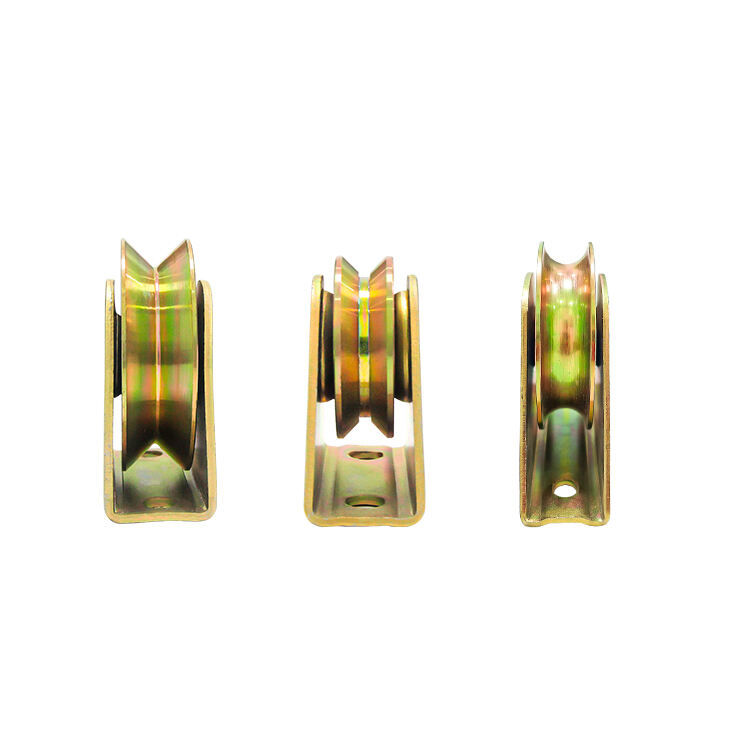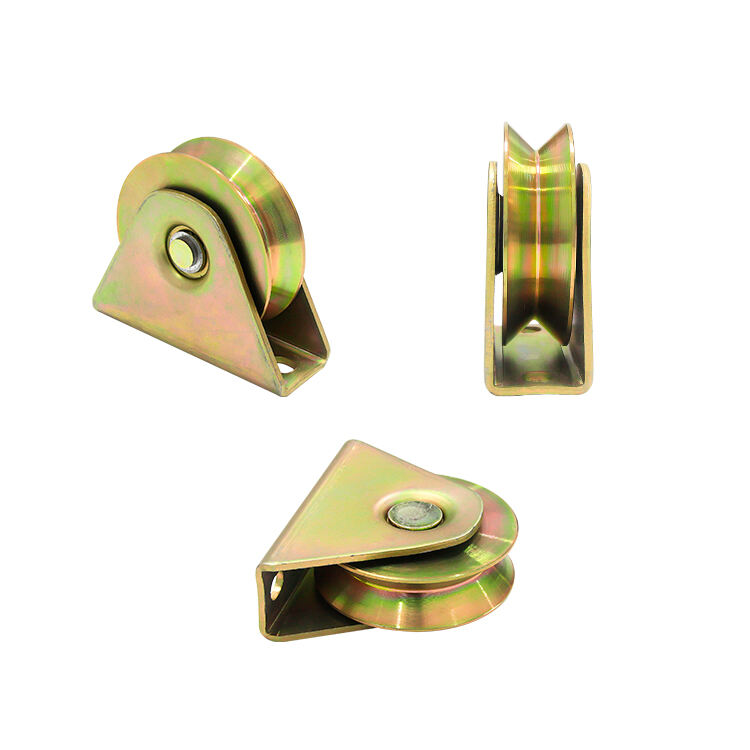Identifying Misalignment in Sliding Door Rails
Signs of Track Misalignment
The sliding door may not be able to be opened or closed if there is misalignment in the tracks and that is why catching the signs early is so important. Search for inconsistency between the door itself and the frame, as such variations could indicate an imbalanced rail, and therefore issues with mechanics. Also, if the door meets resistance or drags when you try to move it, this could be a sign that the track is not level or was poorly installed. Noises during operation can also tip you off to problems: hearing grinding or scraping indicates that rollers are stuck or not seated properly,... and that something's gone hinky with your wayward tracks. Thus, it is possible to avoid to worsen the problems in long term and to keep continuous operation of the system.
Testing Door Movement Smoothness
A rudimentary movement test can give you a sense of how well your sliding door should be working. Just slide the door back and forth and it should move easily, without sticking. If you feel any friction or unsmooth motions, that’s an indication that there could be some alignment issues. If a door becomes hung-up while in use, it is important to determine why and this may be the result of a track being out of line. The tests help detour sliding doors from the potential problems to a more invasive repair.
Checking for Structural Shifts
Sliding doors and a change in structure Sliding doors can be affected It is helpful to examine neighboring structures to see if they have settled or shifted, causing track misalignment. You may have had some addition or grading done around the exterior of the sliding door which changes what the foundation supports. Using a level is a great trick for locating frame woes — measure the levelness on both sides of a straight section of track, and any differences will tell you that there's a problem that needs addressing. By inspecting these components, we can effectively protect our sliding doors from possible operational interferences.
Adjusting Rollers for Proper Rail Alignment
Accessing Roller Adjustment Screws
Getting to the roller adjustment screws is the first step to a silky-sliding door. These screws are generally found at the bottom of the door, but can be different depending on the door. In this case, it’s more important to use correct tools like a Phillips screwdriver or Allen Key to prevent screw heads from stripping. You may also need to detach the door entirely to get better access to the screws. This is necessary to be able to fine tune the door for great alignment and travel.
Raising/Lowering Door Height
Setting a sliding door is important for the doors to work smoothly. You do this by winding the roller adjustment screws clockwise to raise the door, and counter-clockwise to lower it. Crucial adjustments to the height are required to ensure that the door stays in even contact with the rollers so that neither too much of a gap nor too much downward force causes it to work improperly. With these adjustments made, slide the door open and closed to test that it moves freely and doesn’t bind or scrape against the frame.
Testing Post-Adjustment Movement
After it, use the opportunity to perform a test of the sliding door to see if all have also re-aligned properly. Open and shut the door repeatedly and listen for any new noises or restrictions which might indicate underlying challenges. The door slide across the track have no resistance or sense of sticking while sliding. Also make sure the door is even when you open and close the door. Roll bar is good if the car runs steady after changing adjustments and this means front and rear rollers (and the alignment) are set correctly which is a perfect result of any reel maintenance. The door can last longer and be more functional if the door is checked regularly.
Cleaning and Lubricating the Track System
Removing Debris with Specialty Tools
Maintaining the tracks on your sliding door is essential for smooth operation. First off make sure no residue is left in the track with use of a home maintenance vacuum or broom. This can be as basic as running a small vacuum attachment down the track itself. And its stiff bristles can also help get those stubborn bits as well. This maintains the track surface intact but thereby performs a cleaning operation. Routine maintenance for the tracks is a good way to control the build-up of the material that might cause the door to not function effectively.
Using Stainless Steel Scrapers for Stubborn Grime
Occasionally, dirt accumulates and can be stubborn to remove by usual methods of cleaning. In which press a stainless steel scraper can become a handy instrument for a thorough scraping. Scrapers are something to use only when being also very careful about scratching the track, or the roller bogies. The scrupulous cleaning of debris from the tracks ensures that the rails function effectively and gives the sliding door system a longer life span and improved performance. This is a process you can easily add to the list of your regular maintenance, and it will help you to keep the tracks clear and functioning for a long time to come.
Applying Silicone-Based Lubricant
In order to keep your sliding door operating correctly, selecting the proper silicone-based lubricant is key. Such kind of lubricant is water-repellent and provides a stiff barrier against corrosion for a long-lasting use. Upon installation, lubricate the track and rollers evenly to ensure smooth operation. Oil-based lubricants are not recommended due to the tendency to attract dirt and grime (which will degrade the sliding door system). The use of a silicone spray can do a great job in improving the use of sliding doors – they can help you to greatly minimize the friction, so that your door slides easily without any problems.
Removing Obstructions from Sliding Door Rails
Inspecting for Foreign Objects
To ensure that your sliding door operates smoothly, keep the tracks clean and check for wear and tear. This means looking for any foreign matter like leaves, mud or lost items like pet toys. These can cause friction inside the door and wear down on it over time. You may be able to see what other obstacles are lurking in overhead track that you can’t see to the naked eye with a flashlight, giving you the power to remove them as well. It also improves functionality of the door and helps the door to last longer allowing for less wear and tear over time.
Repairing Bent Track Sections
Well, If Nothing Is Broken You may think -pressure-maintaining-therapy but otherwise it could be the cause of your problems. Crescent City supporters are turning that may come that much more eye into a slower pace. Bent or Damaged Track Sections If the track has been damaged or bent, your sliding doors may not perform smoothly. It is important to deal with these problems quickly to keep things running properly. Start by visually examining the track for any bends or warping. If you notice any distortions, you can use pliers or a track straightening tool to gently bend the track back into shape. But if they are too far gone, it may be best to replace them to keep the door working its best. Bear in mind that a properly-working track is both a safe track and a functional track.
Aligning Heavy-Duty Sliding Gate Components
Aligning the heavy-duty parts of your sliding gate - such as the gates and hinges - is crucial for their smooth operation. Improper alignment can cause the tracks and other gate components to wear out quickly. Check the alignment of these and the wiring is all secure first. This discourages off-centering during action as well as extends the life of the system. If it has it it’ll need to be looked at as it can be a good indicator of misalignment or wear that can save you time and money in getting it fixed by a professional.
Assessing and Repairing Track Damage
Straightening Warped Metal Tracks
Sliding Door Maintenance: Warped Metal Tracks One of the things that can be cause wear and tear on your sliding doors is having warped metal tracks. Warped areas can cause the door to get stranded, in turn making it less effective. Use a rubber mallet to knock these parts straight by lightly hitting them back into shape. You'll need to check how bad the warp is, if it's work it can be fixed, if not replace the track section to keep you box both safe and far more efficient. Routine surveys can find these problem spots before they become an issue, and keep you up and runningand save you money.
Replacing Corroded Rail Segments
Corrosion is a major threat to sliding door rail sections integrity and safety. A comprehensive inspection is required to find any evidence of corrosion. For the parts that have a heavy rust, you will need to measure them accurately and order replacements to ensure a fast repair. To avoid future problems, paint the new rails with rustproof paint. This will not just help prevent further rusting but prolong the life of your sliding door. Routine maintenance and timely attention to rust can substantially extend the life and usefulness of the door.
When to Consider Professional Sliding Gate Motor Repairs
Despite routine home maintenance, there will be cases when the assistance of the professional is very much needed most particularly with issues concerning automatic gate motors sliding gate. In case things continue to not work properly, including more serious electrical troubles or necessary hardware replacements other than general maintenance, it is strongly recommended to consult with a professional. This advice can sometimes save a lot of time and make sure the door works properly and there’s no chance for future issues. Getting help on those difficult issues can take a load off your mind and keep you focussed on what you need to perform.




